Human-wildlife conflict and coexistence impacts both biodiversity conservation and sustainable development. Perceptions of the seriousness of human-wildlife conflict are most pronounced in Africa. A GWP survey of governments found that 73% of responding countries in Africa agreed human-wildlife conflict is a major and serious concern, and 79% agreed that human-wildlife conflict is increasing.
The Global Wildlife Program (GWP), funded by the Global Environment Facility and led by the World Bank, in partnership with the Elephant Protection Initiative Foundation (EPIF) organized a regional, technical workshop on human-elephant conflict from May 8 to May 9, 2024, in Nairobi, Kenya. On May 10, the GWP organized an additional discussion with human-wildlife conflict technical officers on technical priorities.
- OVERVIEW
- AGENDA
- RESOURCES
- RELATED
The workshop brought together 70 participants from over 20 countries in Africa, including countries in the GWP and Elephant Protection Initiative (EPI) member states. Participants included EPI national focal points and human-wildlife conflict technical officers, conservation and development partners, and GEF Agency representatives.
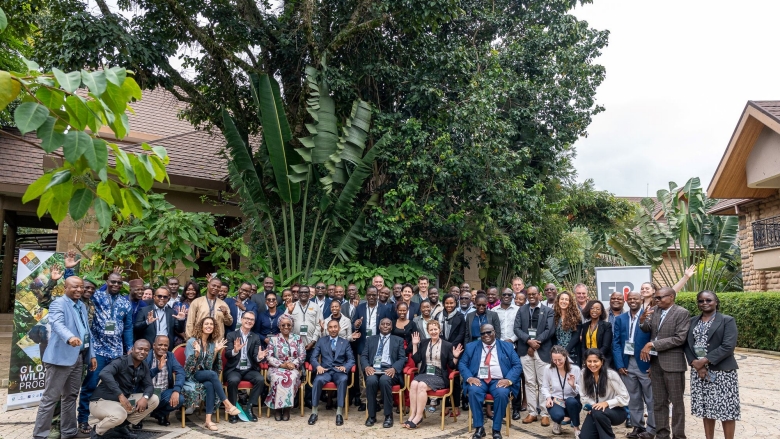
The workshop included five sessions with interactive discussions focused on challenges and scalable solutions to mitigate human-elephant conflict. This included topics such as enabling policies and national level strategies, financial inclusion, community engagement and site-based interventions.
The objectives of the workshop were to facilitate knowledge exchange on the context and scale of human-elephant conflict in Africa, including the challenges around managing human-wildlife conflict; identify relevant lessons learned and scalable solutions that can promote coexistence; and promote networking opportunities and collaboration among participants.
Summary
Lisa Farroway, Program Manager, Global Wildlife Program, welcomed the participants and introduced Keith Hansen, Country Director, Kenya, World Bank, who opened the workshop highlighting the commitment of the World Bank to support countries as they reduce human-wildlife conflict. Dr Stephen Cheruiyot, Director of Planning, Ministry of Tourism and Wildlife, Kenya, provided an overview of Kenya’s vision to manage human-elephant conflict.
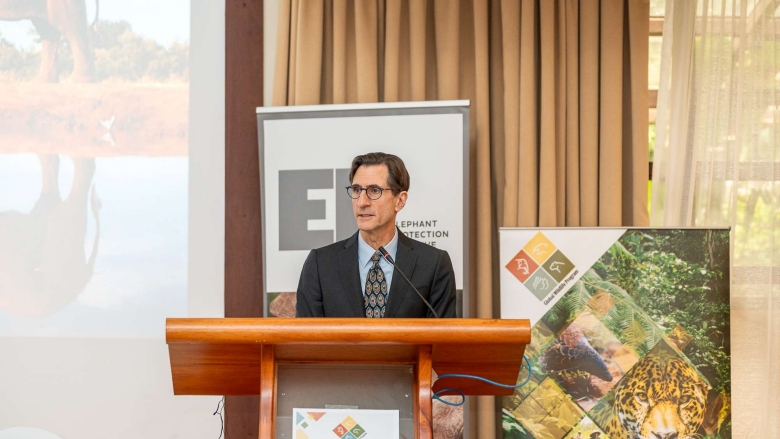
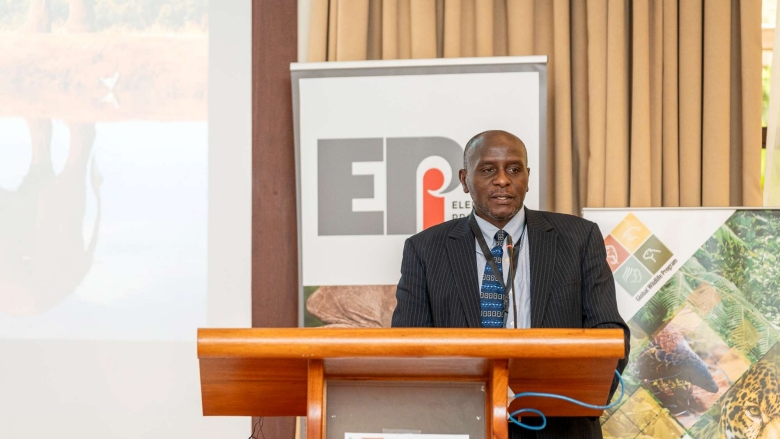
The opening remarks were followed by a panel discussion moderated by John Scanlon, CEO of EPIF. High level panelists from Nigeria, Kenya, and Ethiopia highlighted the increasing concern of human-wildlife conflict in their countries and its impact on local livelihoods. They emphasized the need for community-focused conservation strategies; better policy implementation, including land use planning; and collaboration within and across countries to address challenges. The panelists agreed that the drivers of human-elephant conflict – population growth and resource competition – must be considered in the planning and design of solutions.
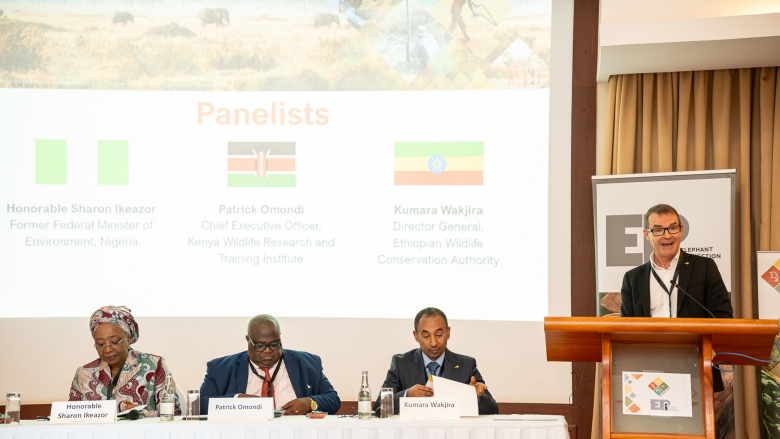
The second session focused on the context and challenges of human-elephant conflict. Lisa Farroway provided an overview of a global survey, led by the GWP, to understand insights and perceptions of human-wildlife conflict. Laureen Cheruiyot, Manager, Africa, Conservation International, moderated a panel with presenters from Zambia, Gabon, Tanzania and Mozambique. The key takeaways from this session included a common understanding that human-elephant conflict was increasing across the region due to factors such as an increasing elephant population, habitat degradation, and the lack of funding to support communities with mitigation. In Gabon, from 2016 to 2022, the government received 22,000 complaints of conflict incidences. In Zambia, the government had monitored 63,000 cases, half of which were induced by elephants. There is a mismatch between the scale of conflict and the response to it. Both Tanzania and Mozambique highlighted the challenge of inadequate infrastructure, equipment, and the lack of data and research to effectively monitor and manage this issue. However, it was clear that countries are capturing information related to crop raiding, human injuries, and mapping hotspots to enable action.
The panel discussion was followed by an interactive session where the participants chose the top three challenges across four categories: increasing, decreasing, major challenges, and those challenges that they need technical support on.
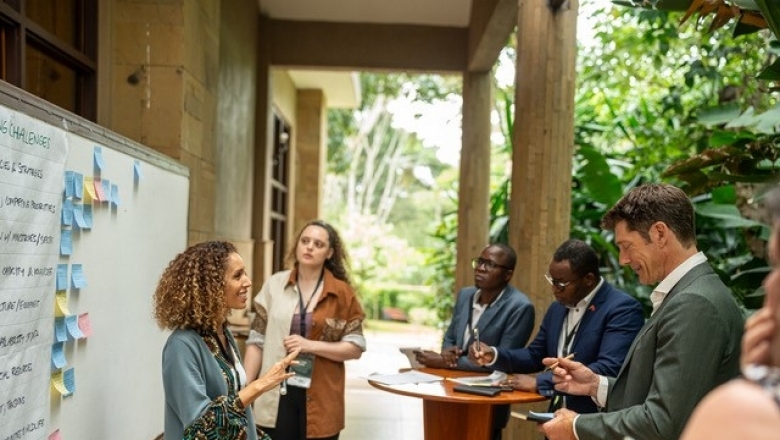
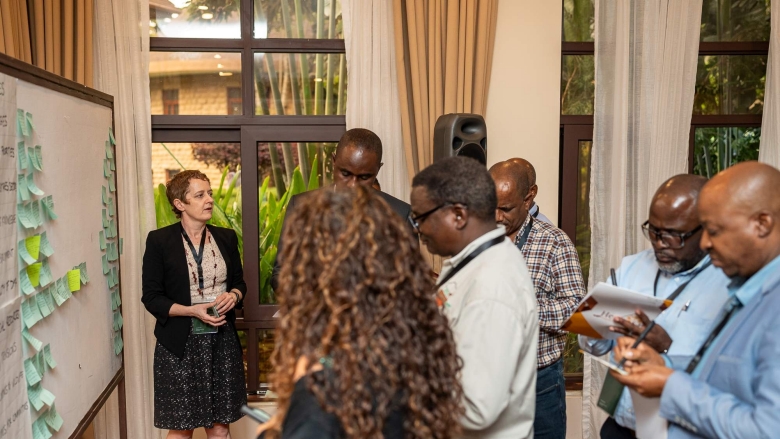
On the second day, the sessions covered a variety of solutions to human-elephant conflict management. The morning session began with a session on the Enabling Environment, where Greta Francesca Iori, Director of Programmes, EPIF, moderated a panel with government representatives from Namibia, Botswana, and Madagascar. Panelists emphasized the importance of political will in integrating human-elephant conflict into biodiversity and development priorities through awareness raising initatives, working across ministries through quaterly meetings to address the drivers of conflict, and drafting comprehensive human wildlife conflict strategies and policies with local stakeholder consultation. From the countries at the workshop, Kenya, Namibia, Mozambique and South Africa mentioned they had a human-wildlife conflict strategy.
The panel was followed by an interactive activity where participants were asked to discuss what they thought were important factors to enhance the enabling environment. The factors that came out most prominently were capacity building, community engagement, and benefit sharing mechanisms.
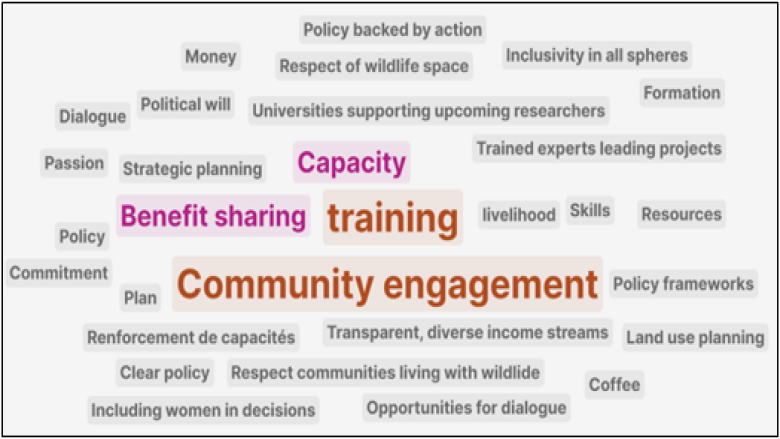 I consent to my personal data being processed according to the WBG Privacy Notice<\/a>.<\/p>",
eventConfigs: {
emailSubscriptionId: "a02440fa123c4740a83ed288591eafe4",
subscribeEndpoint: "https:\/\/webapi.worldbank.org\/aemservice\/v1\/newsletter\/subscription\/subscribe",
unsubscribeEndpoint: "https:\/\/webapi.worldbank.org\/aemservice\/v1\/newsletter\/subscription\/unsubscribe",
profileByIDEndpoint: "https:\/\/webapi.worldbank.org\/aemservice\/v1\/newsletter\/profile\/getByID",
newSubscriberEmailTemplate: "itscd\u002Dextes\u002Dwbg\u002Devents\u002Dreminder\u002Dsignup\u002Den\u002Dtemplate",
existingSubscriberEmailTemplate: "itscd\u002Dextes\u002Dwbg\u002Devents\u002Dreminder\u002Dsignup\u002Den\u002Dtemplate",
unsubscribeEmailTemplate: "itscd\u002Dextes\u002Dwbg\u002Devents\u002Dreminder\u002Dunsubscribe\u002Den\u002Dtemplate"
}
};
I consent to my personal data being processed according to the WBG Privacy Notice<\/a>.<\/p>",
eventConfigs: {
emailSubscriptionId: "a02440fa123c4740a83ed288591eafe4",
subscribeEndpoint: "https:\/\/webapi.worldbank.org\/aemservice\/v1\/newsletter\/subscription\/subscribe",
unsubscribeEndpoint: "https:\/\/webapi.worldbank.org\/aemservice\/v1\/newsletter\/subscription\/unsubscribe",
profileByIDEndpoint: "https:\/\/webapi.worldbank.org\/aemservice\/v1\/newsletter\/profile\/getByID",
newSubscriberEmailTemplate: "itscd\u002Dextes\u002Dwbg\u002Devents\u002Dreminder\u002Dsignup\u002Den\u002Dtemplate",
existingSubscriberEmailTemplate: "itscd\u002Dextes\u002Dwbg\u002Devents\u002Dreminder\u002Dsignup\u002Den\u002Dtemplate",
unsubscribeEmailTemplate: "itscd\u002Dextes\u002Dwbg\u002Devents\u002Dreminder\u002Dunsubscribe\u002Den\u002Dtemplate"
}
};
